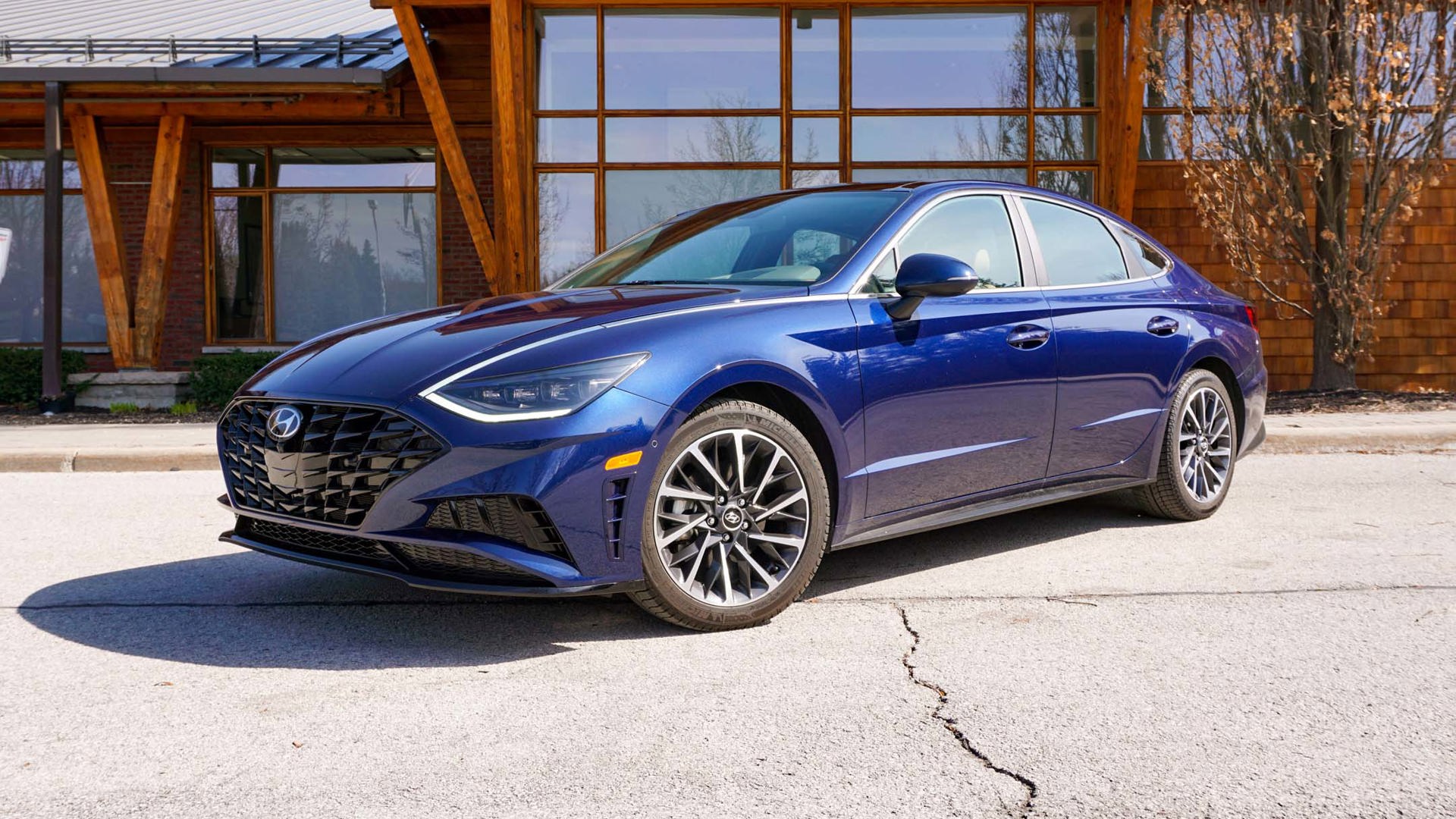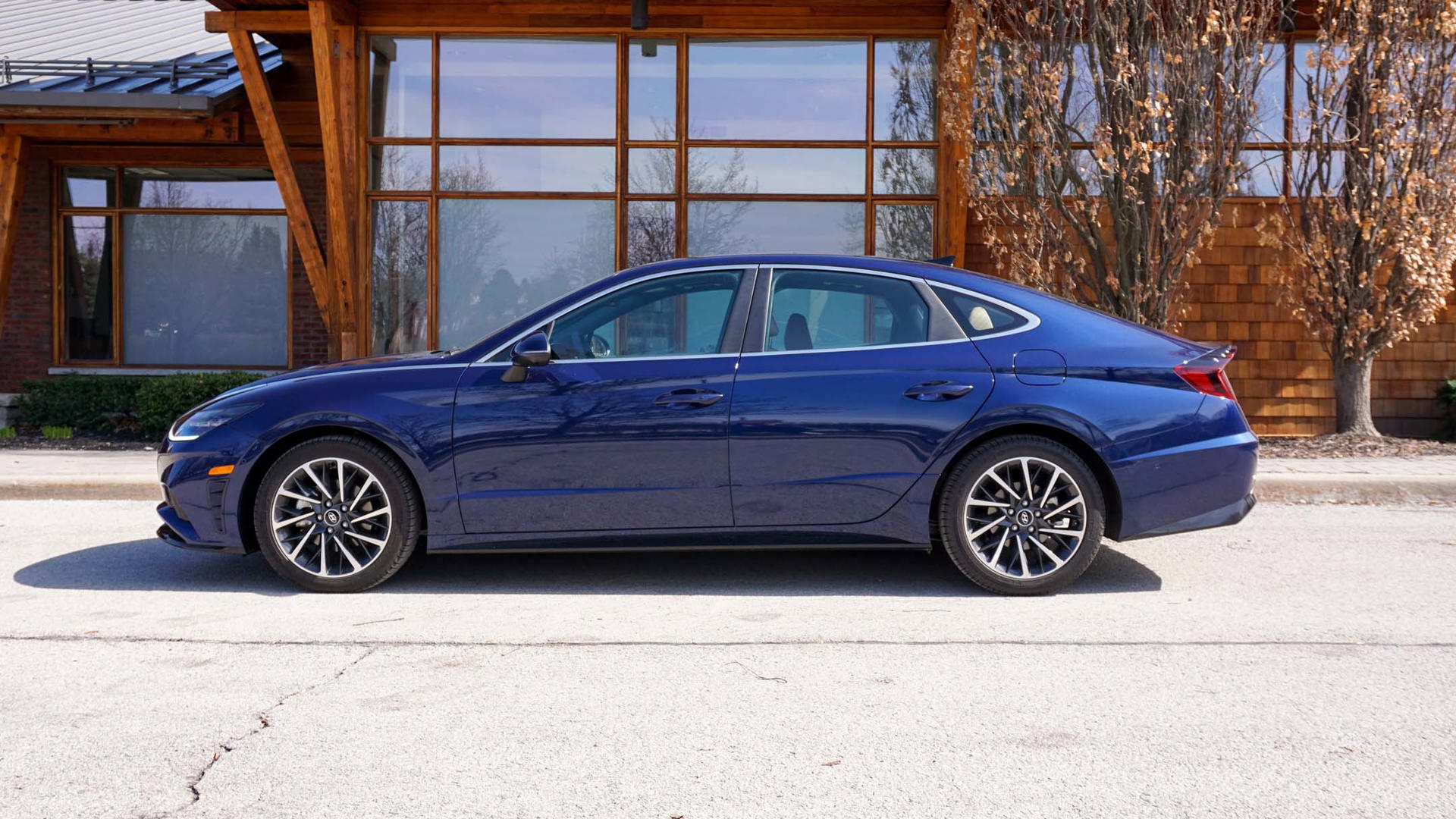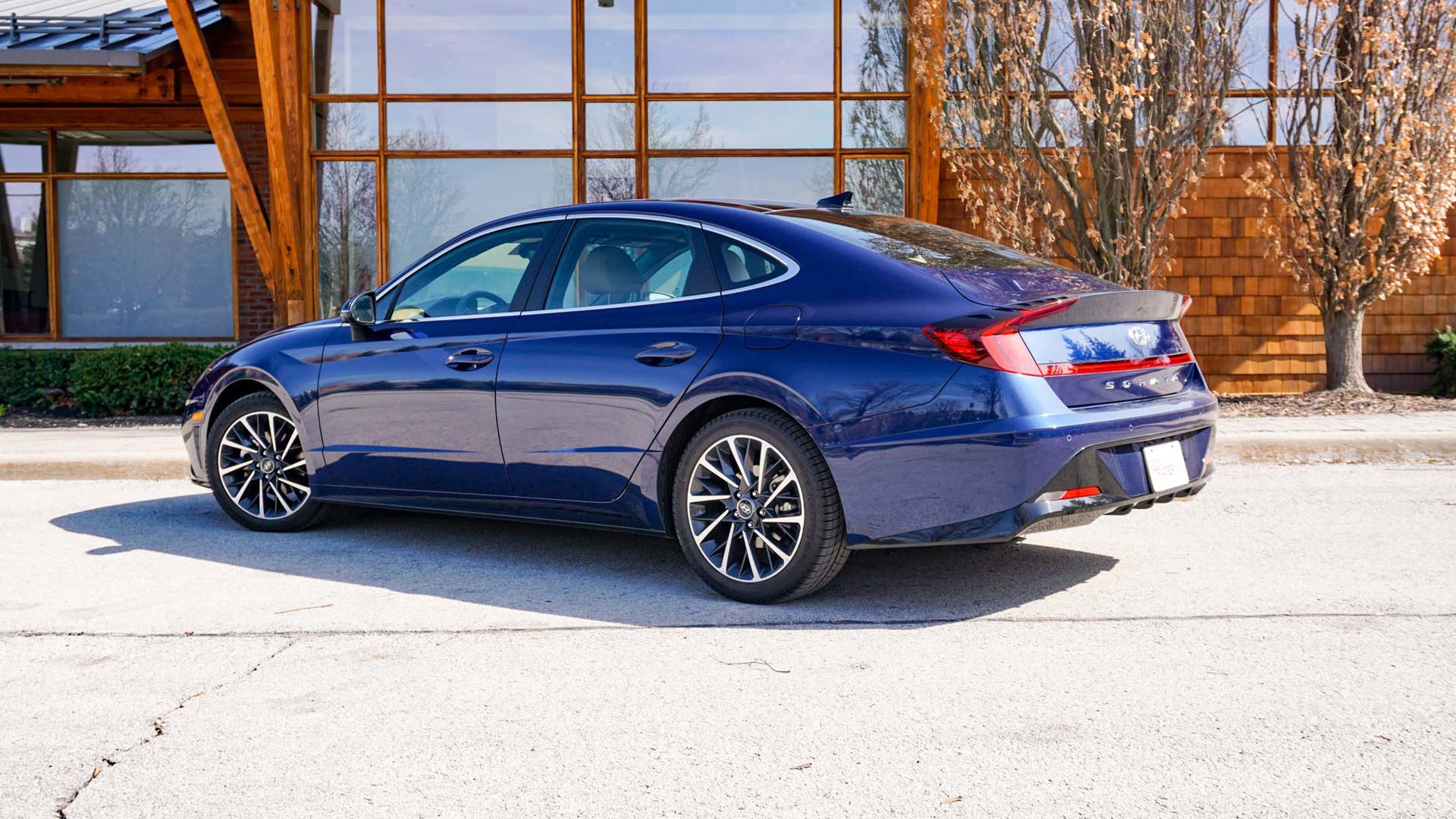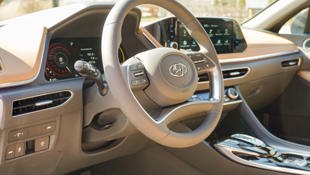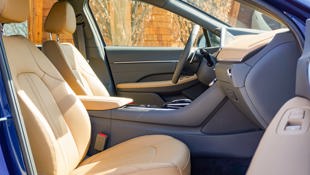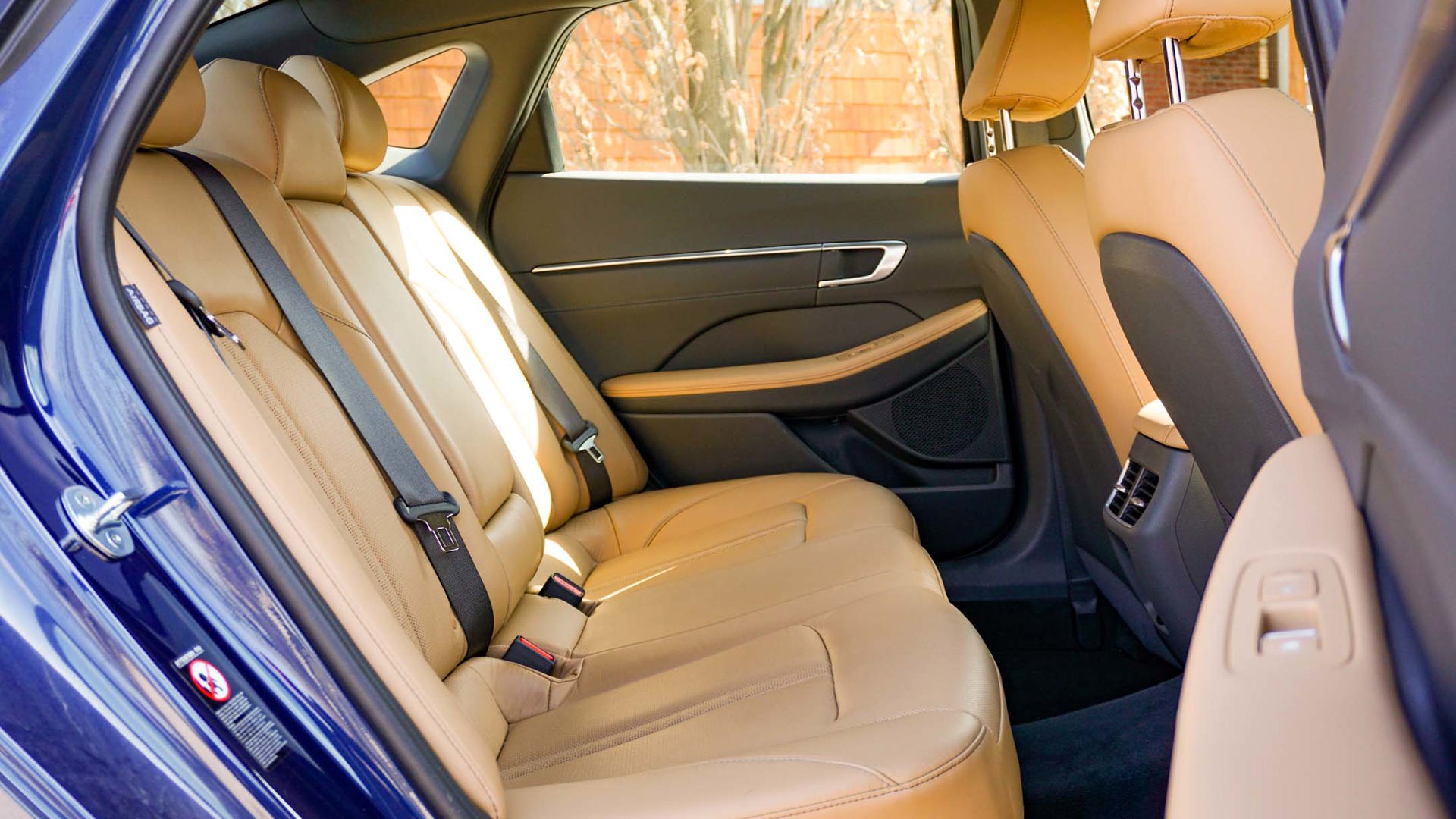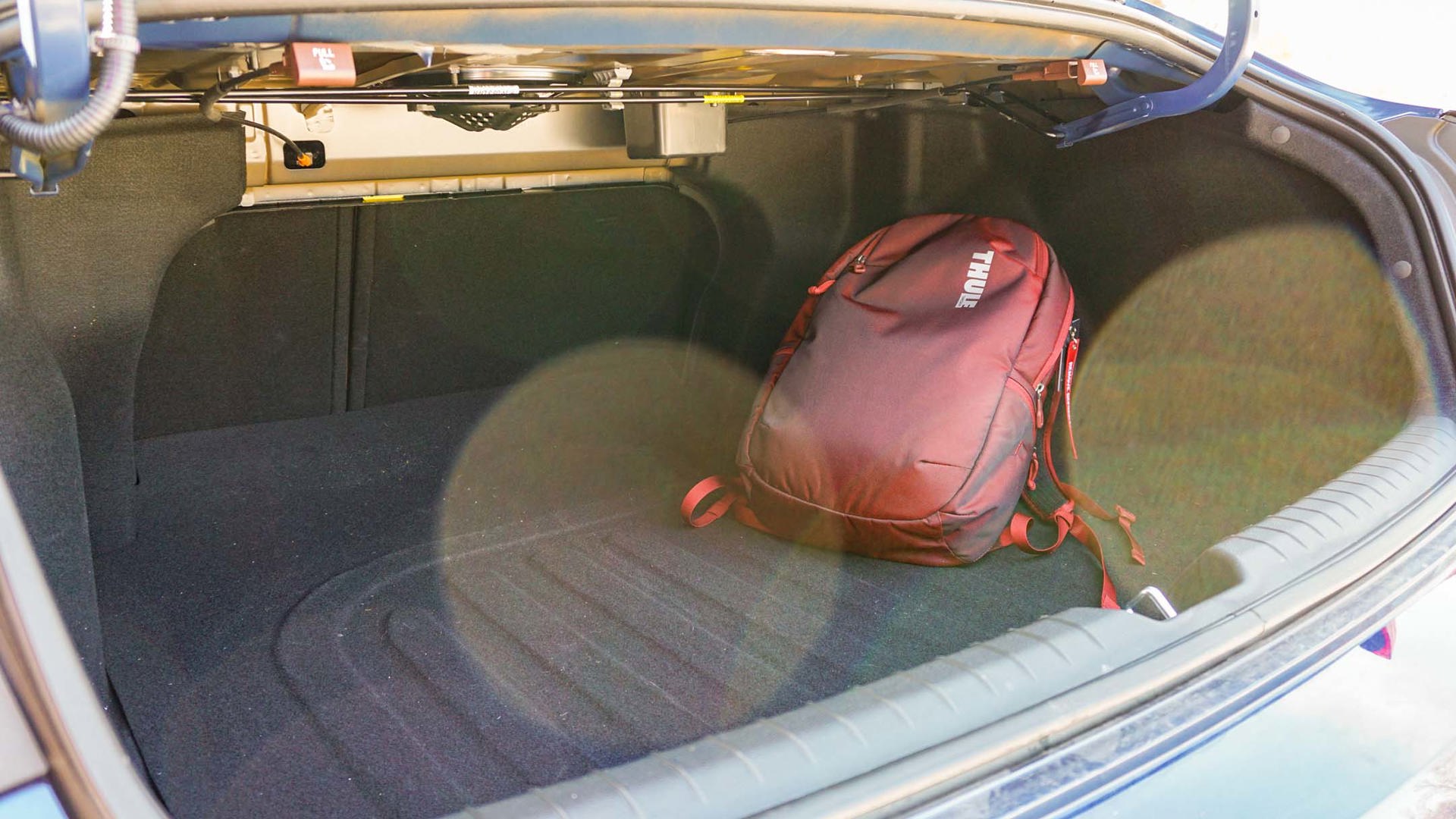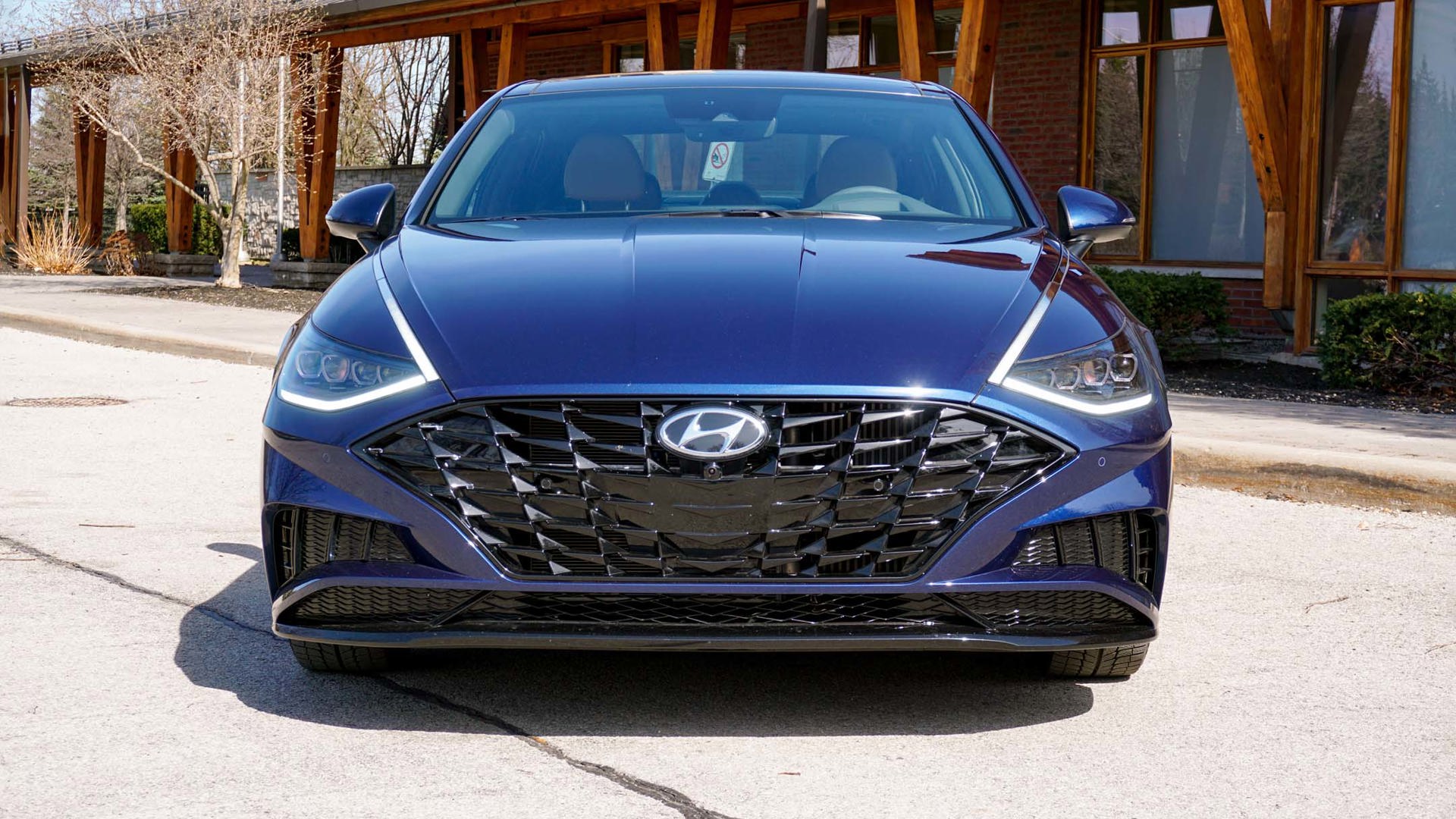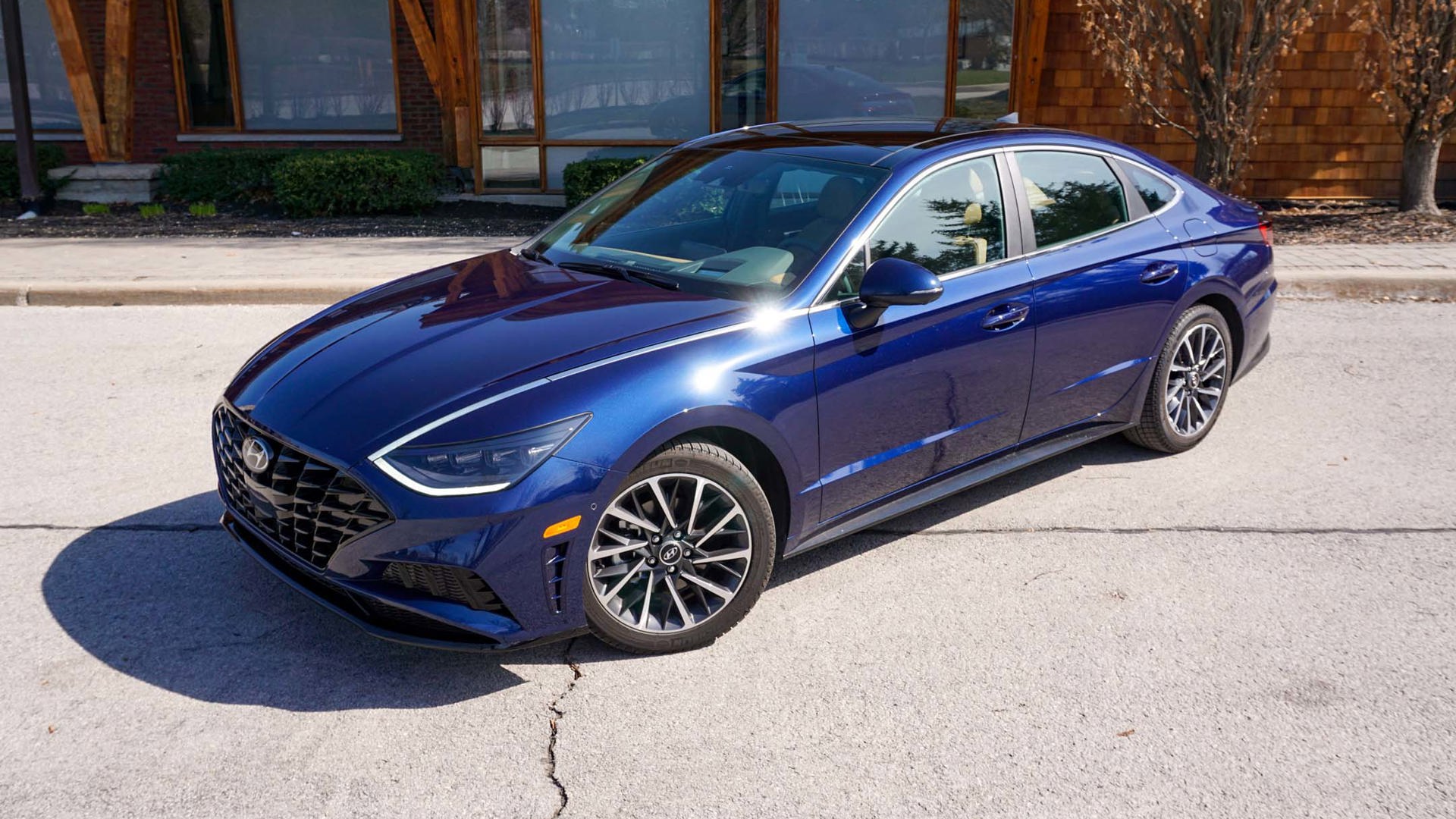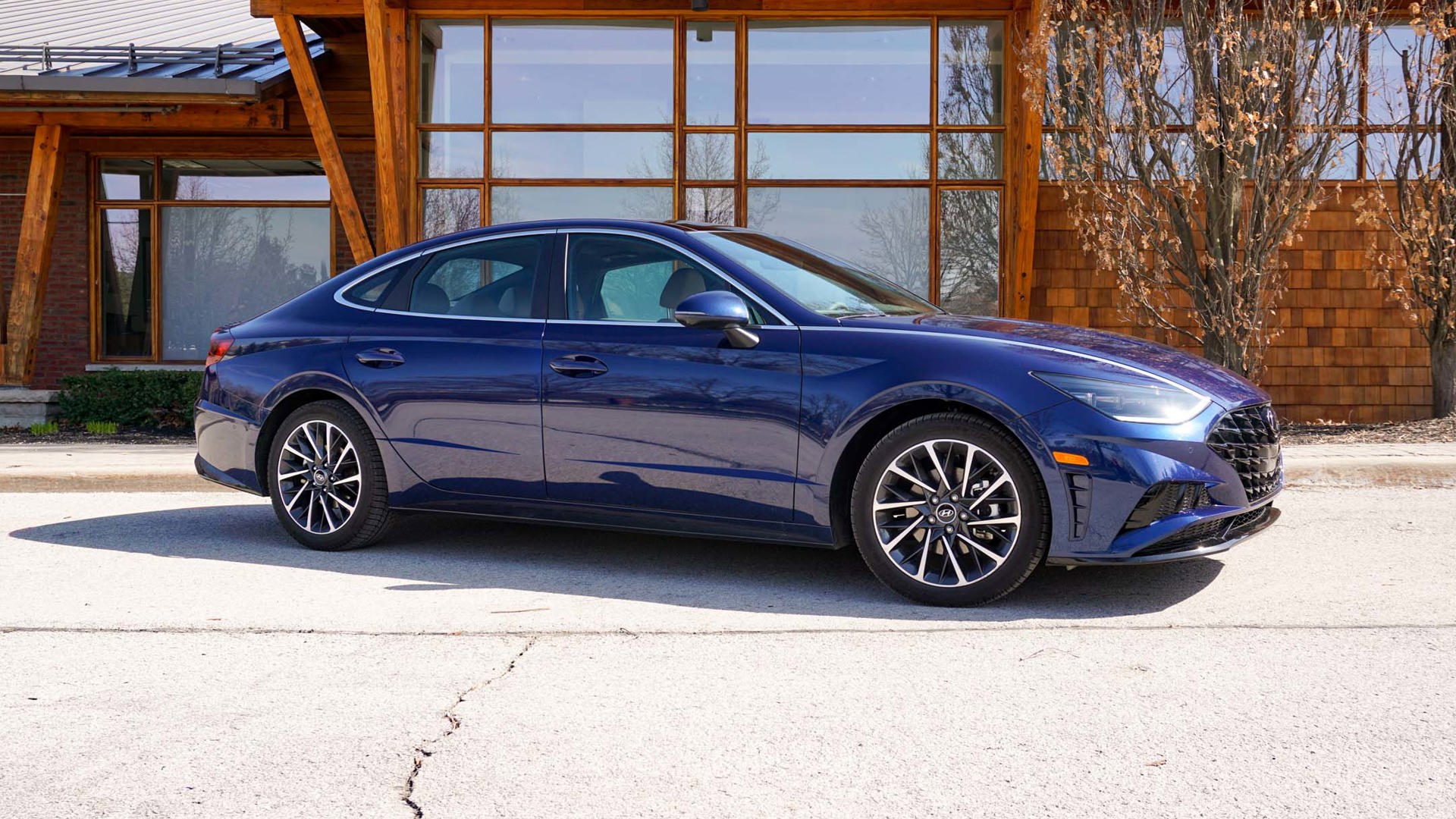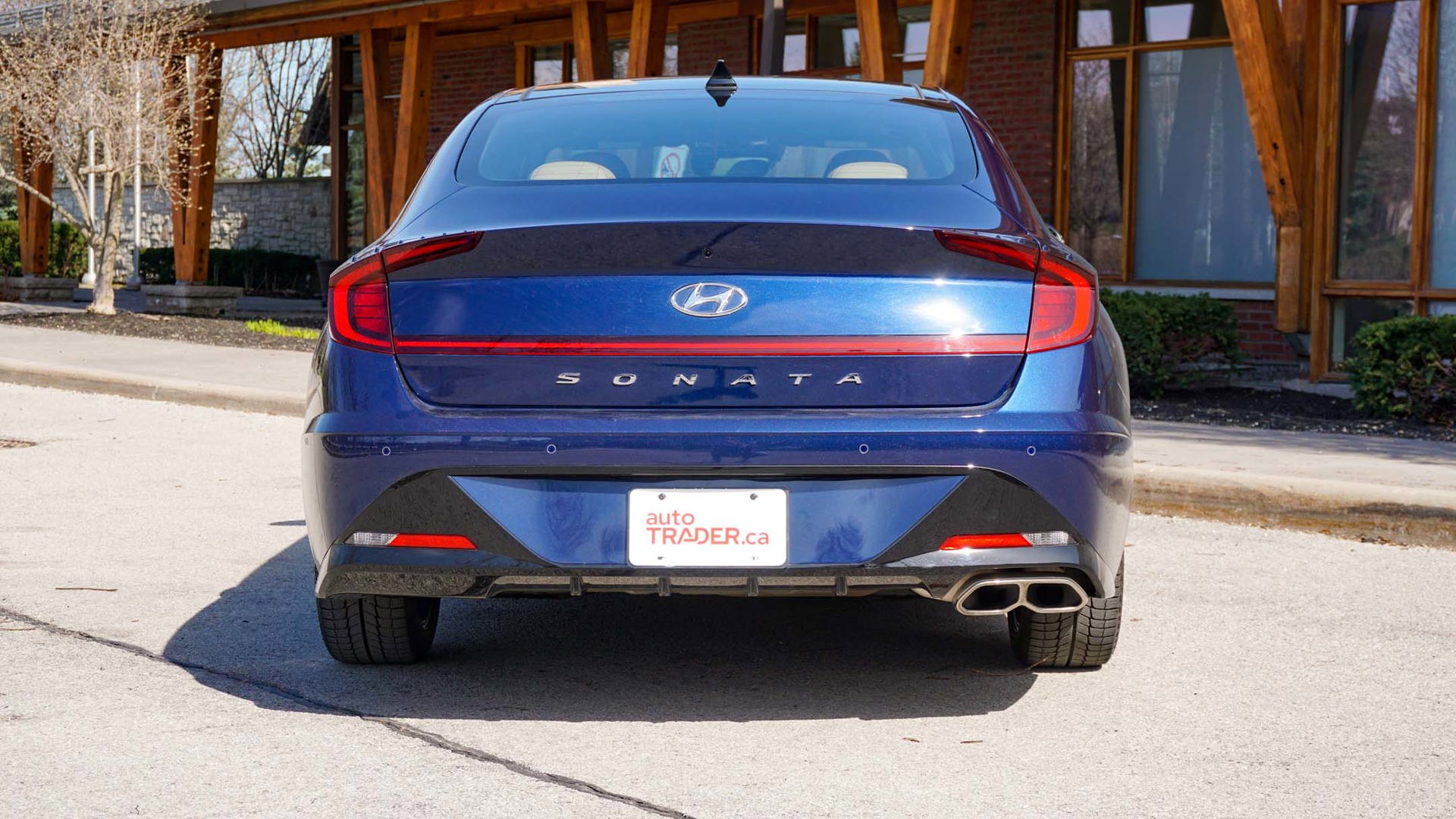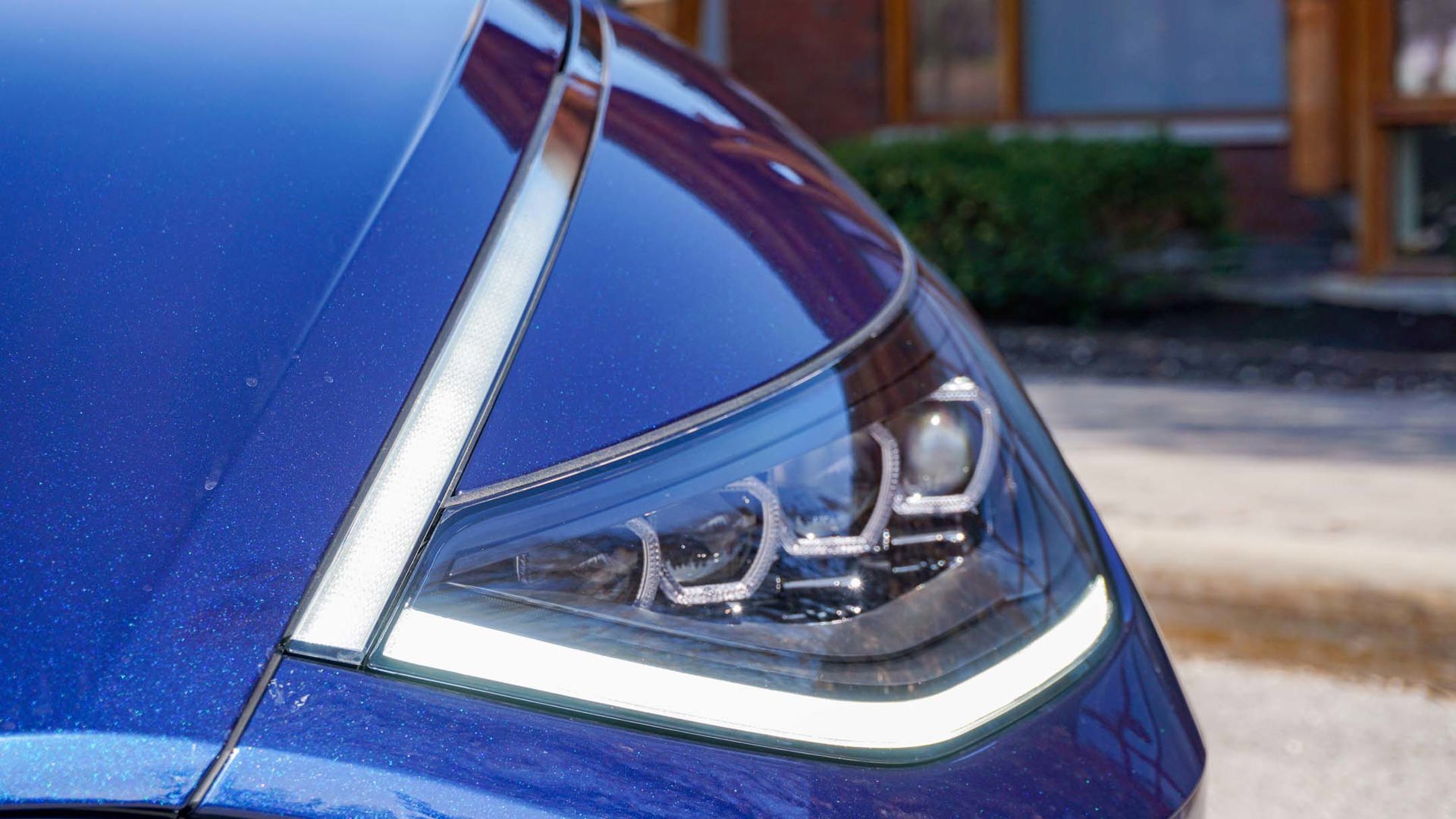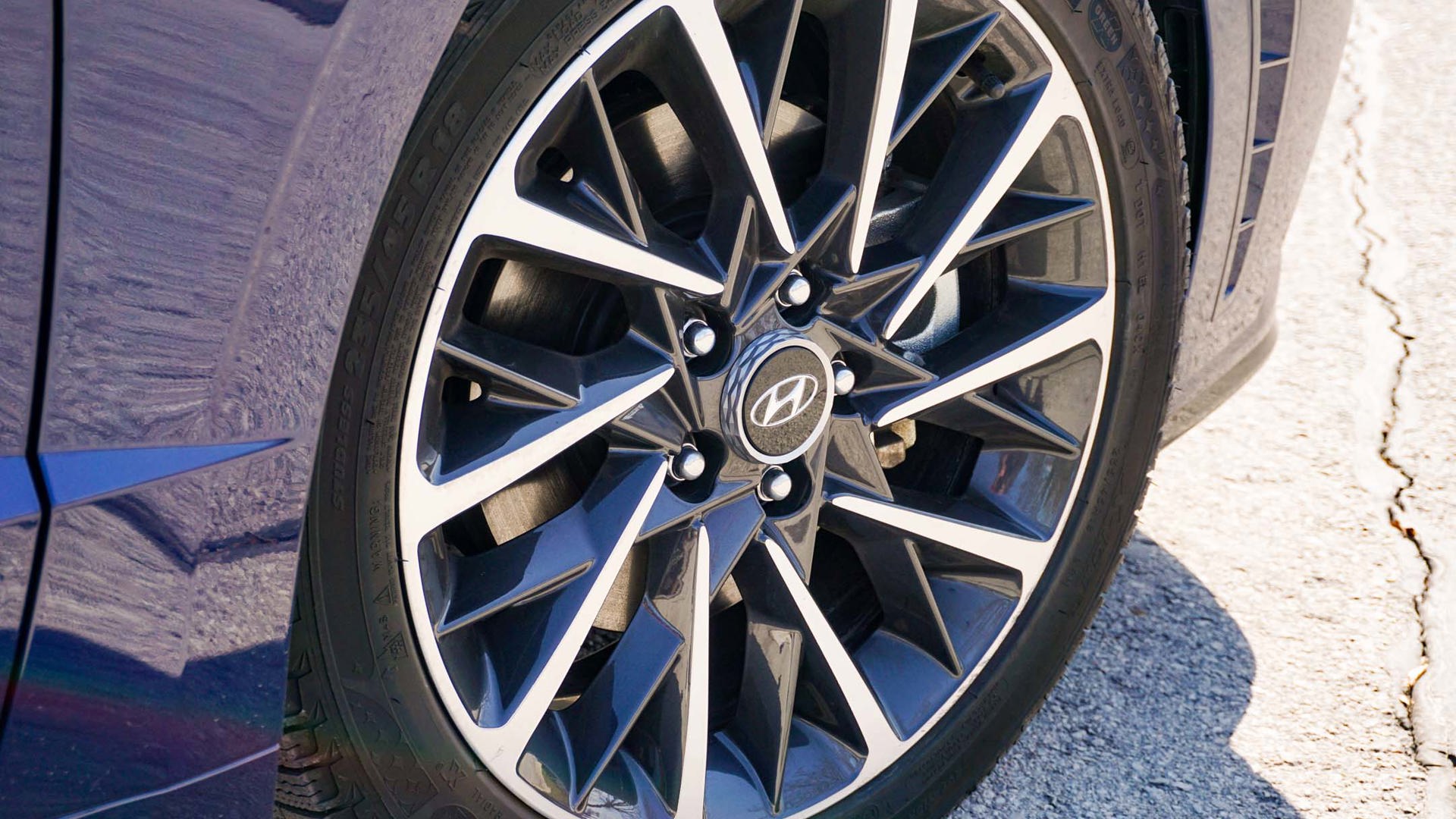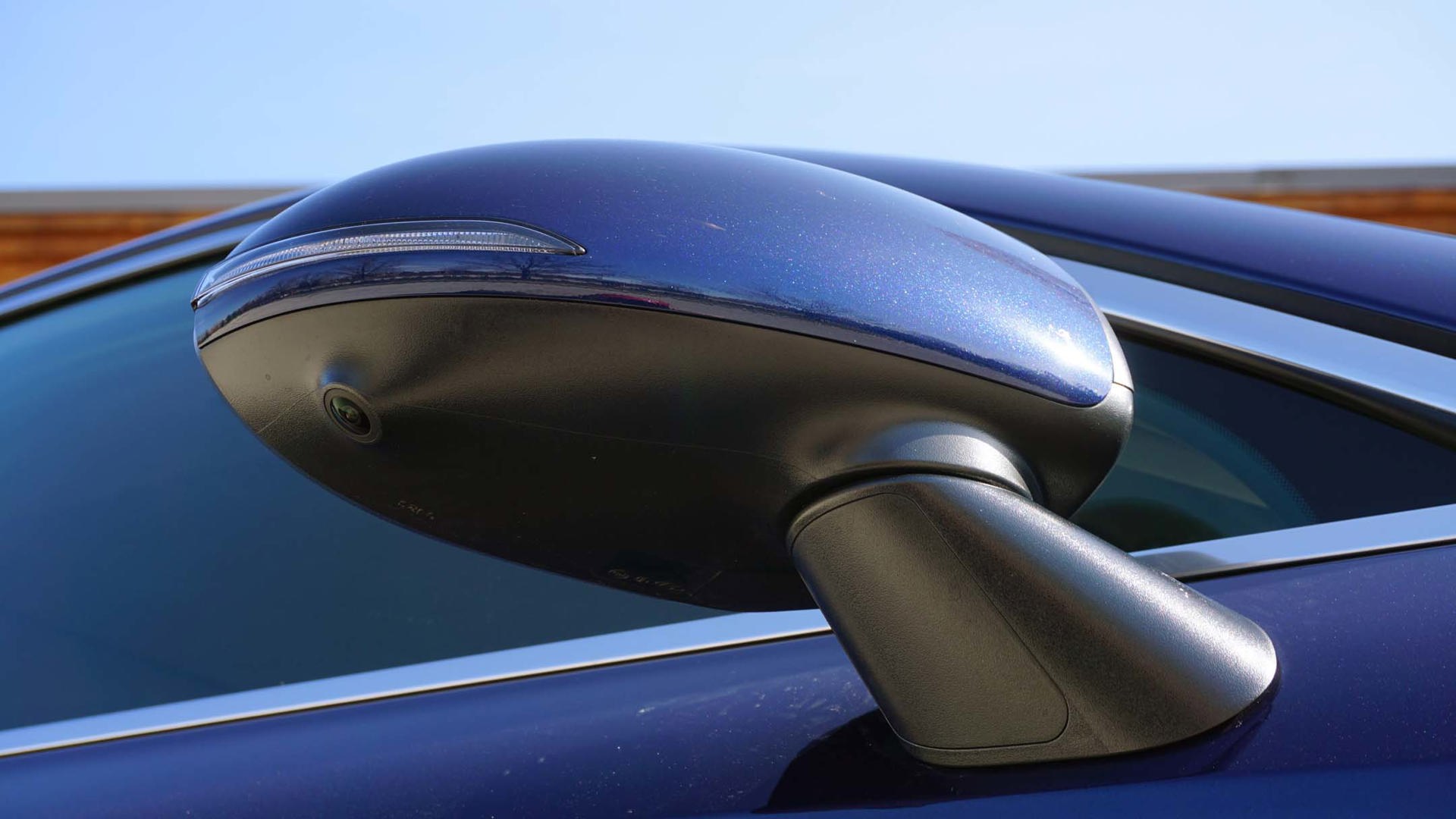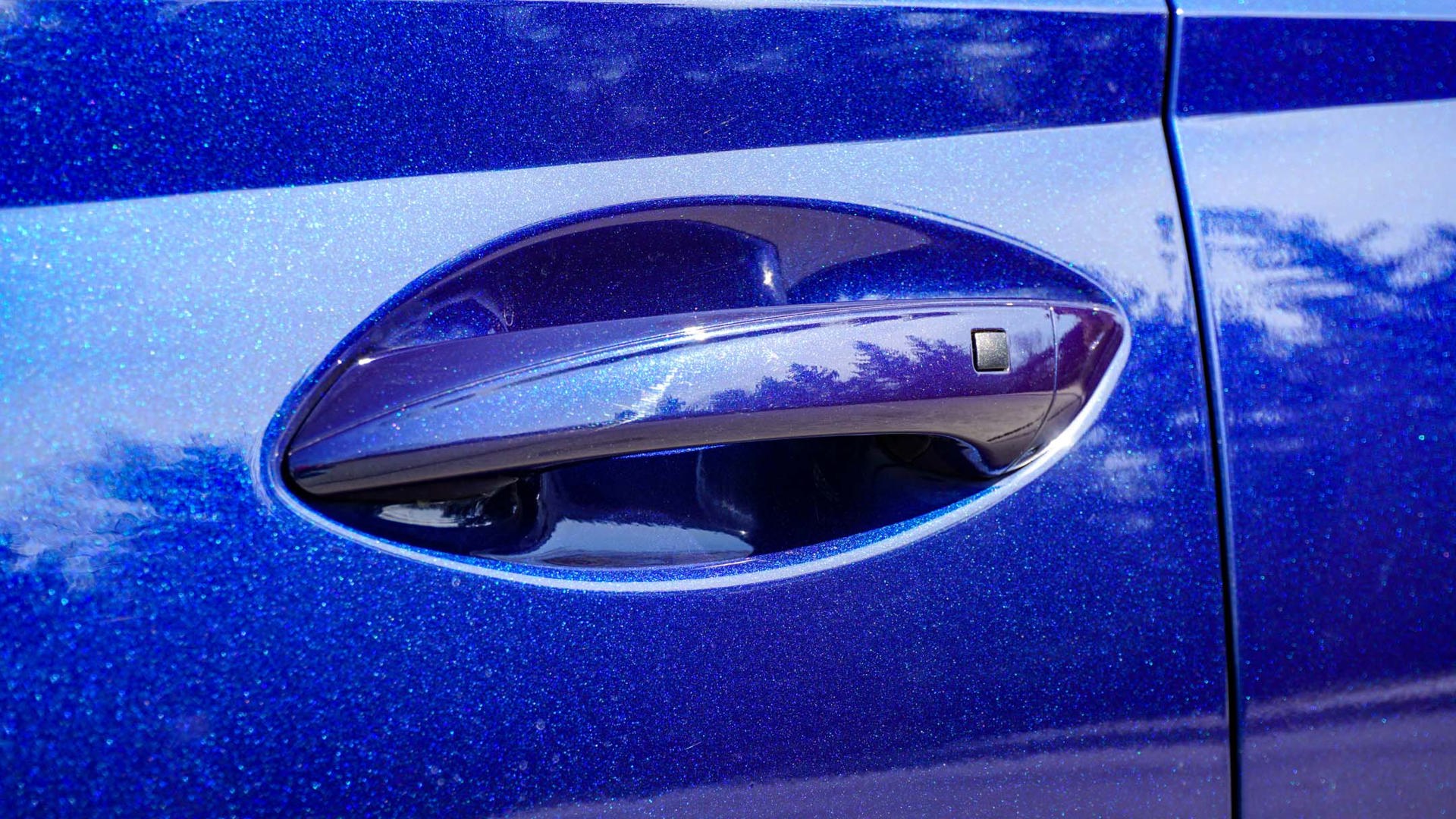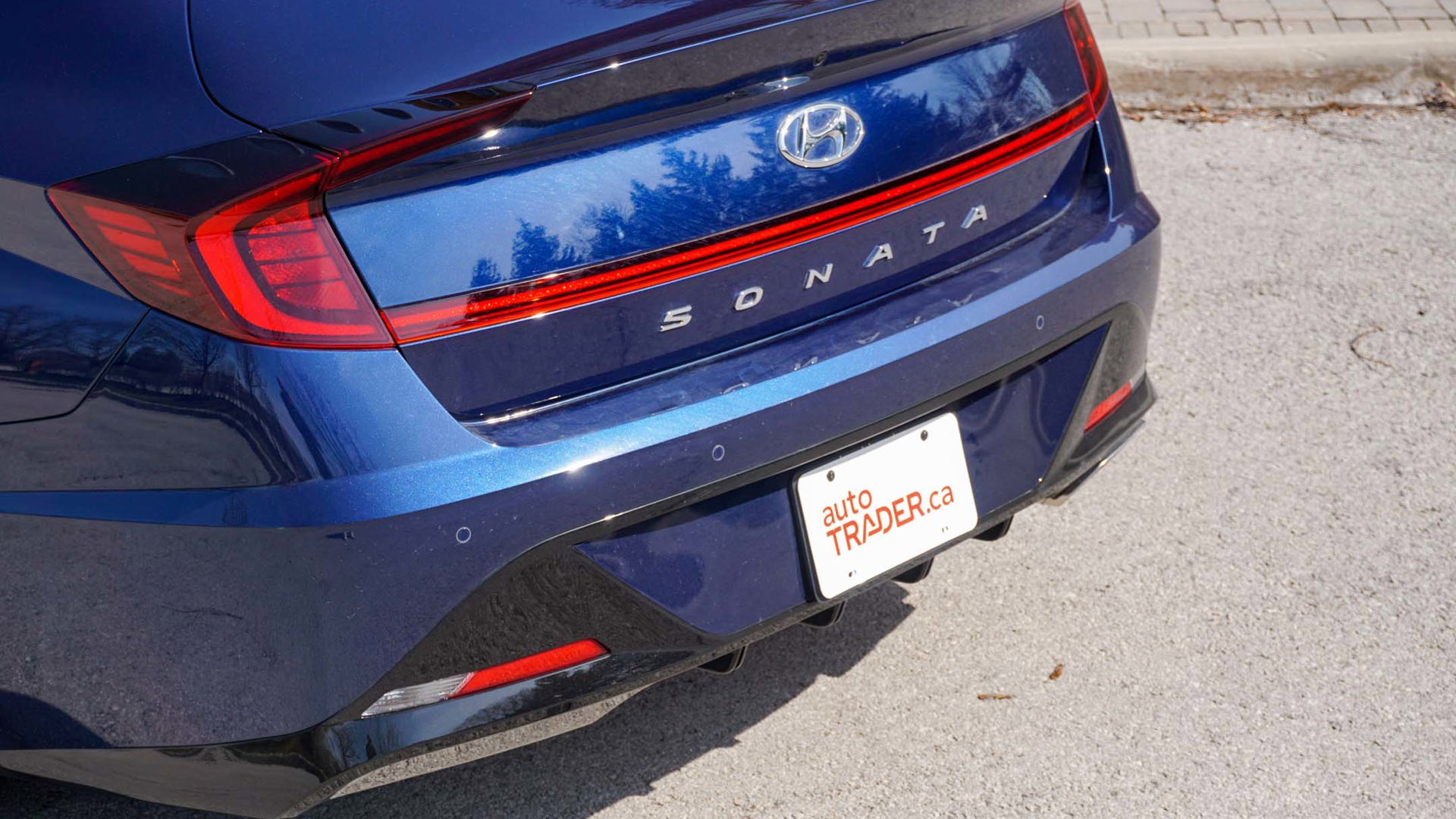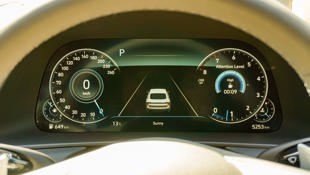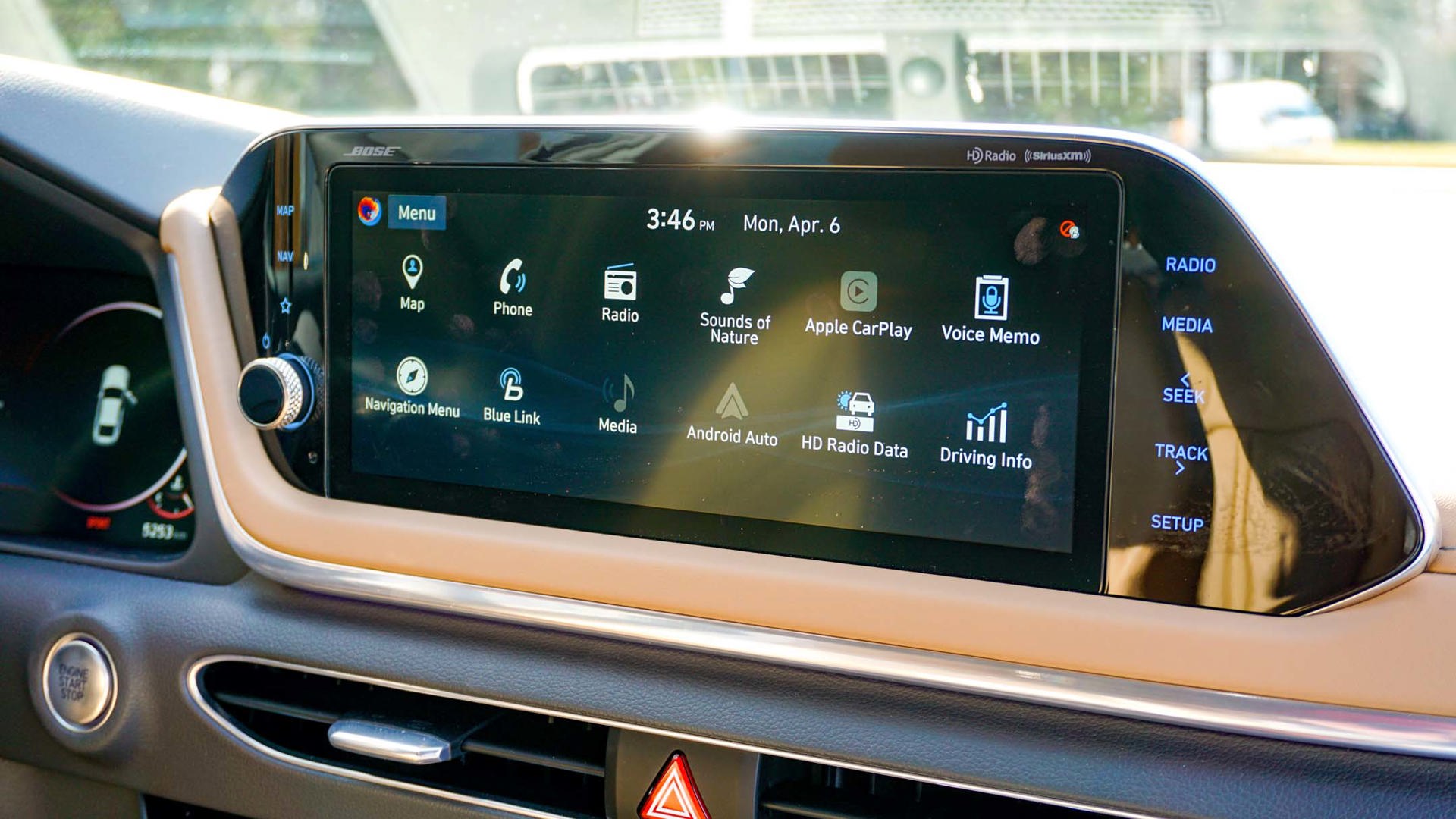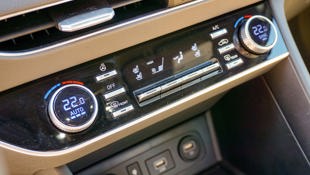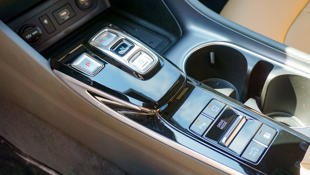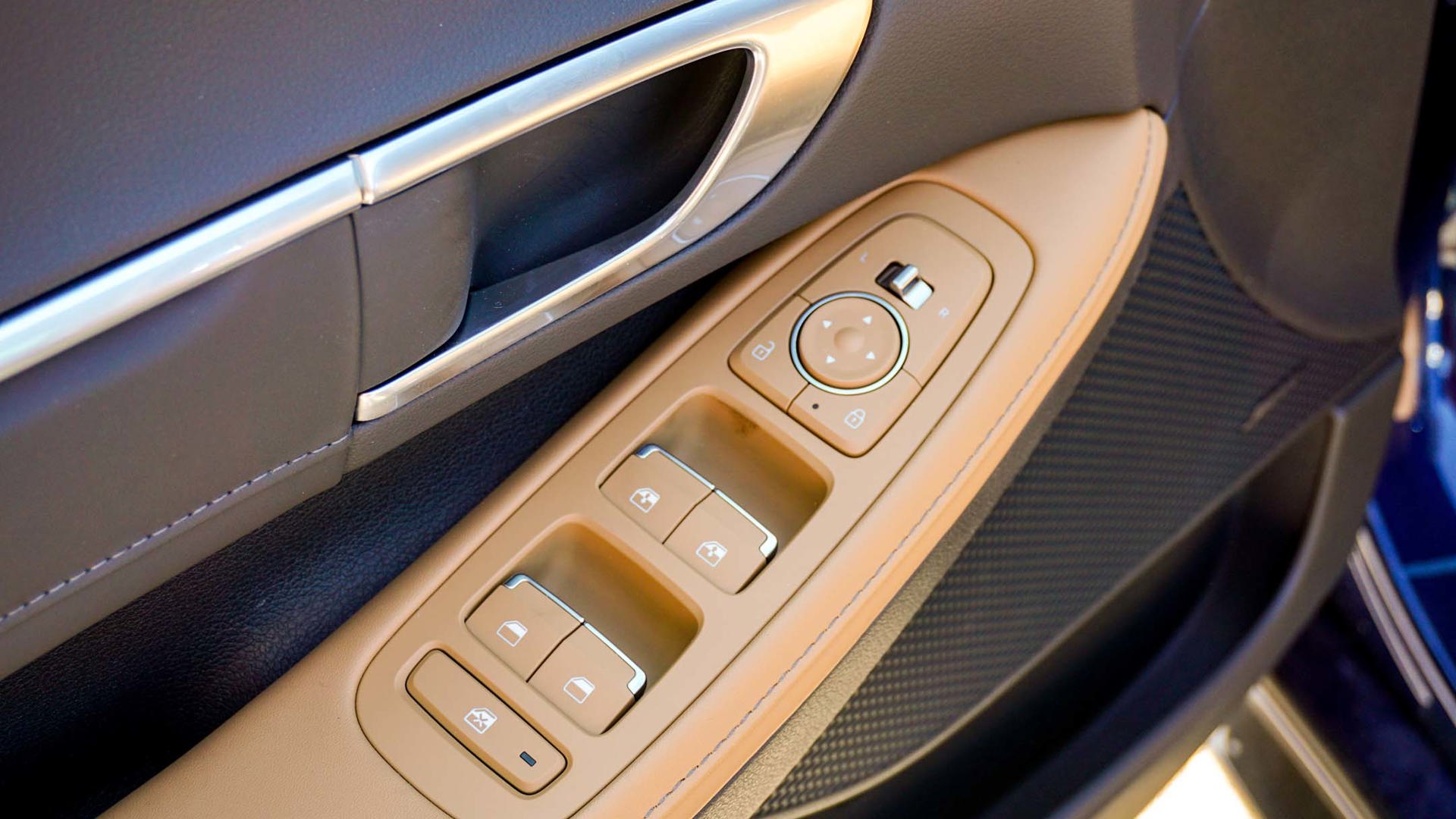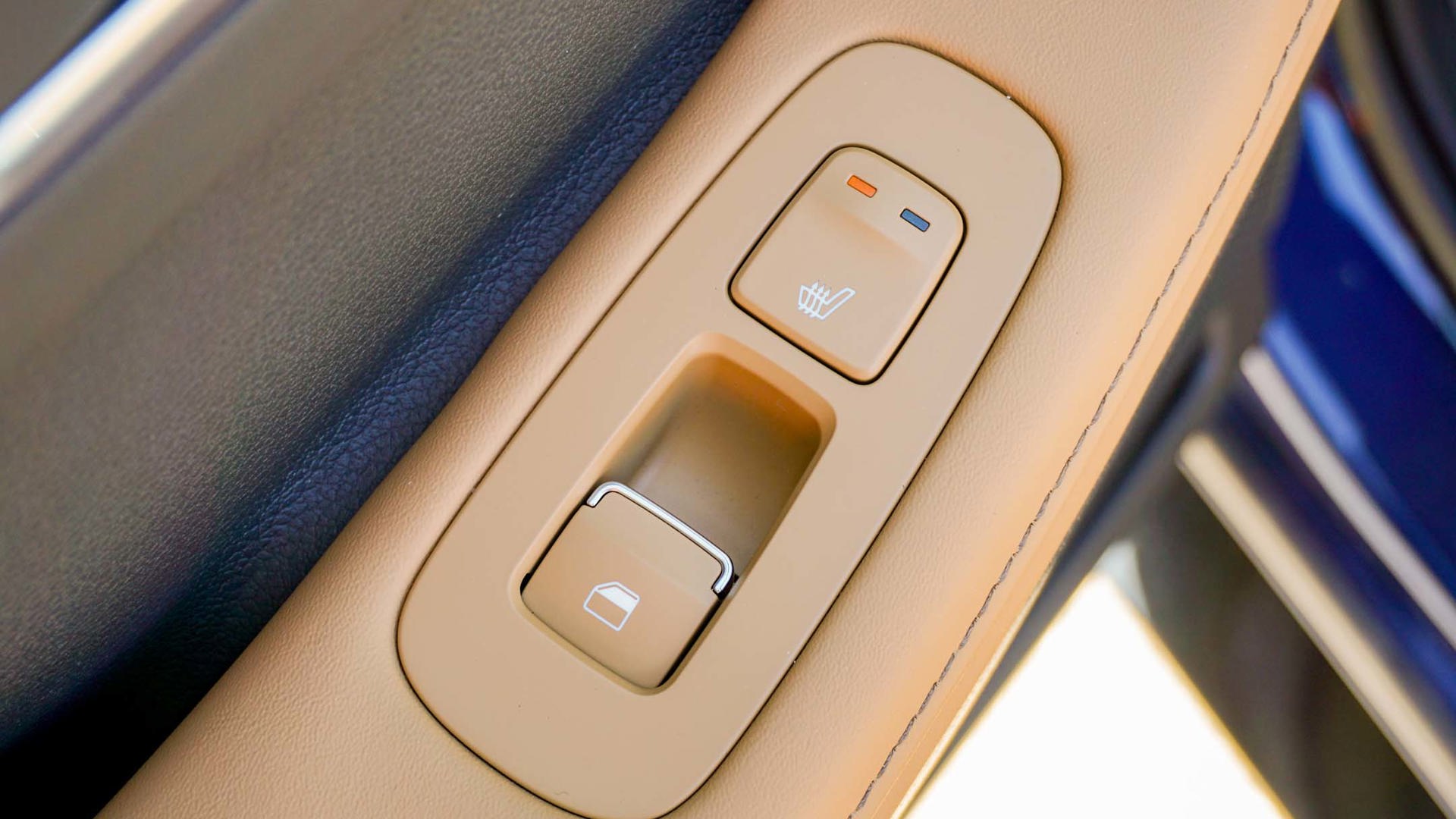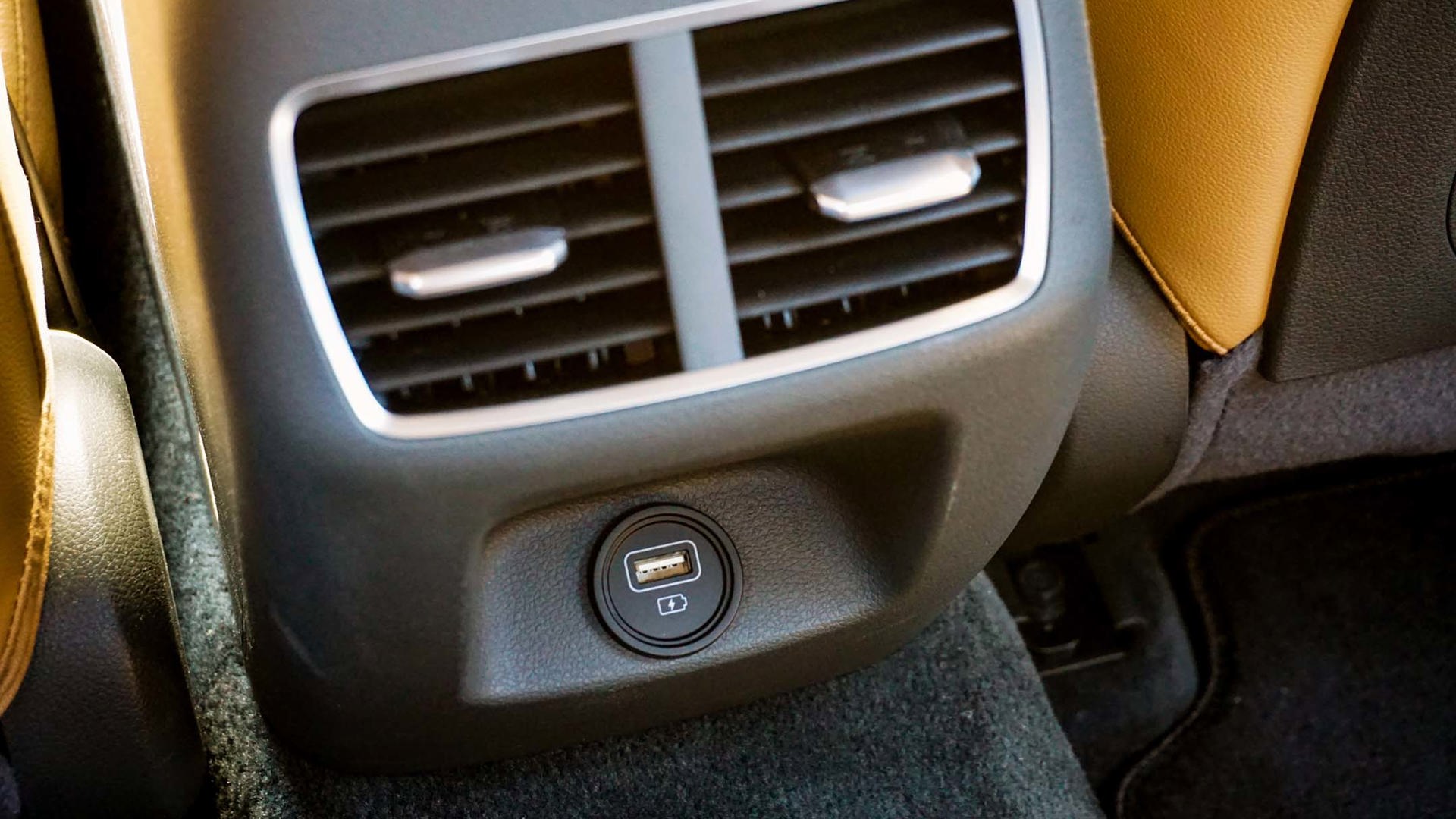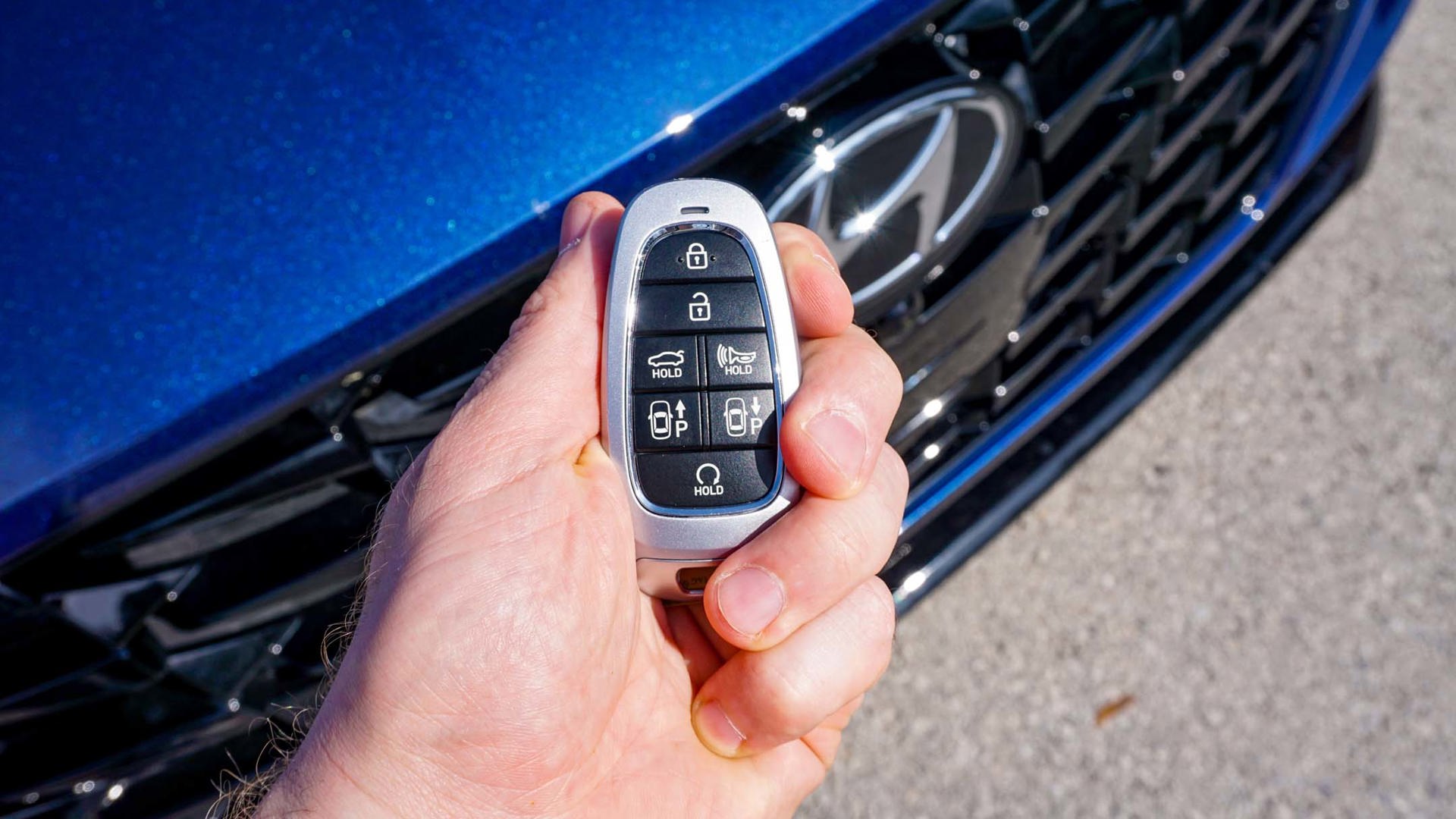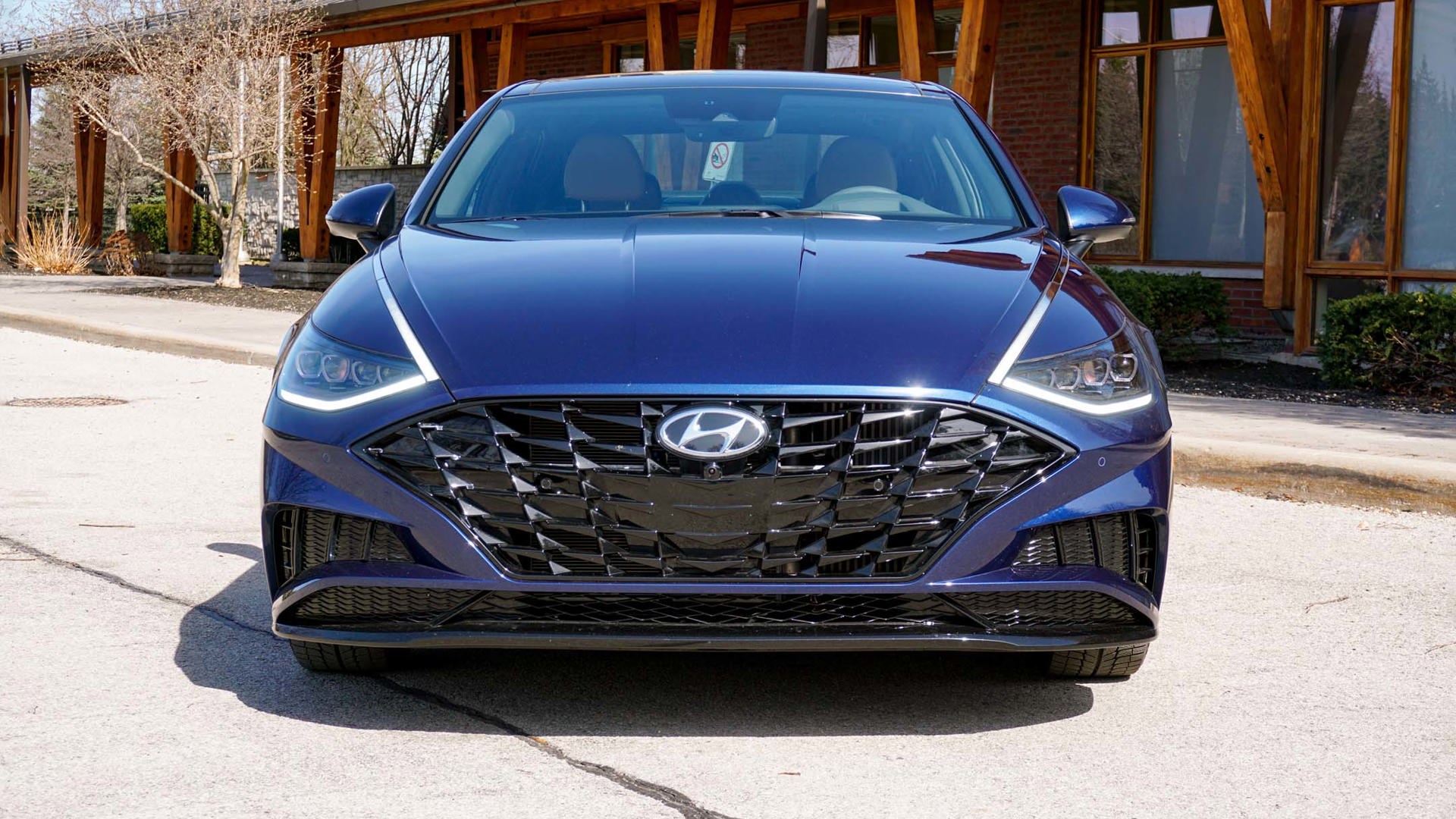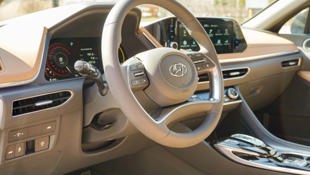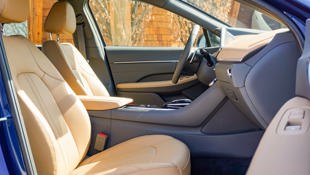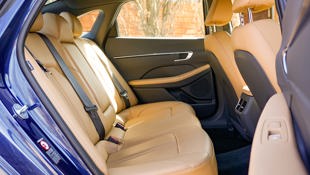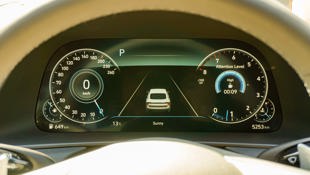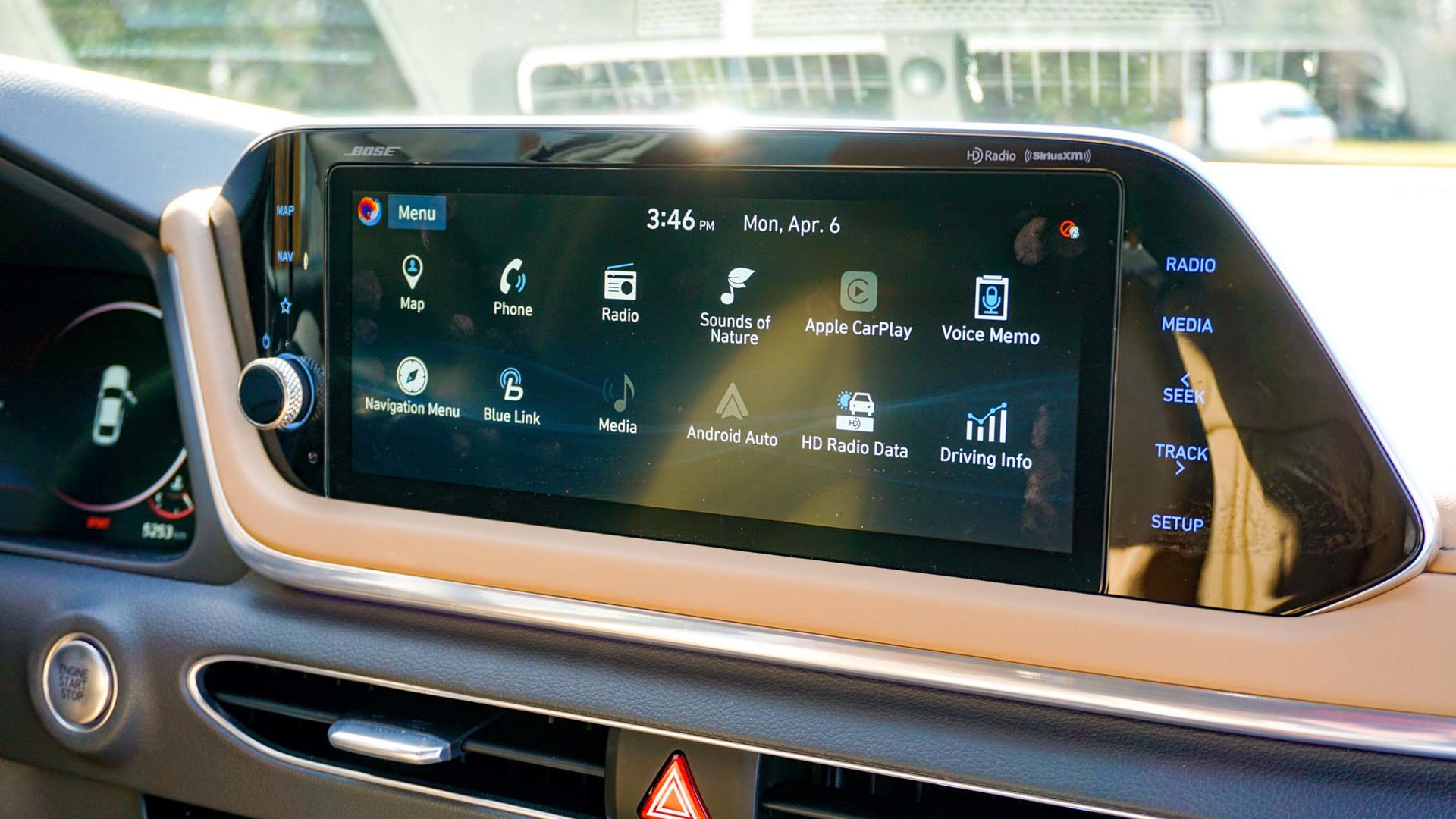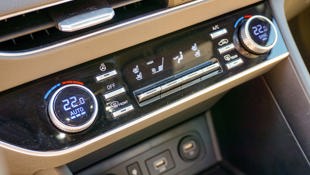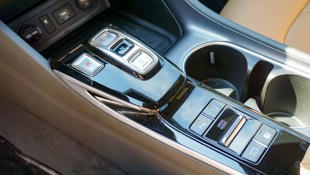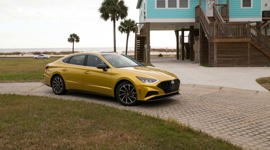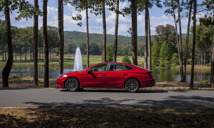 AutoTrader SCORE
AutoTrader SCORE
-
STYLING6/10
-
Safety9/10
-
PRACTICALITY8/10
-
USER-FRIENDLINESS8/10
-
FEATURES9/10
-
POWER8/10
-
COMFORT7/10
-
DRIVING FEEL9/10
-
FUEL ECONOMY9/10
-
VALUE9/10
Viewed from most angles, the redesigned 2020 Hyundai Sonata is an objectively sleek and stylish sedan.
Unfortunately, those angles do not include a glimpse of the front end, which boasts a catfish-like look that’s objectionable in almost every way. And that’s a real shame, because what lies behind that face only a Cajun cook could love is a strong entry in a segment filled with them.
Styling: 6.5/10
Given that unflattering introduction, it’s unlikely to surprise you, dear reader, that I am no fan of the redesigned Sonata’s front end. I have not been fond of many of the brand’s design decisions as of late – please see the Kona and Palisade for more evidence of offensive fascias – but this new-look sedan stoops to a new low.
The way the hood slopes downward towards the gaping grille is awkward and disproportionate, giving the Sonata the look of a bottom-feeding fish. Only adding the unflattering aesthetic are a pair of LED accent lights that run back towards the windshield like the barbels on a catfish.
Go ahead and close one eye, then hold your thumb out so it’s blocking the grille from view. What you’re left with is an objectively attractive sedan. The same is true when the Sonata is viewed in profile, and especially from behind. But none of it matters, because the well has already been poisoned by that misshapen maxilla.
It was only a couple of years ago that Chevrolet, in response to ridicule over the Camaro’s restyled fascia, took a mulligan and introduced a redesign of the redesign before it even went on sale. Sadly, it’s too late for Hyundai to take the same approach; however, the Sonata deserves to be saved sooner rather than later. Especially because of how stylish the rest of the car is.
Driving Feel: 9/10
I’m quick to forgive the glaring facial faux pas for a variety of reasons, but at the top of the list might very well be the manner in which it drives. Put simply, the Sonata is closer to perfect than anything it competes with directly – and perhaps even a few premium sedans it doesn’t.
The suspension and steering are nearly flawless, foregoing the stiffness and excessive heft found in the Honda Accord for something more supple and approachable. Yet it doesn’t skew too far the other way either, landing precisely between the Accord and Subaru Legacy for the ease in which it drives. Neither athletic nor lethargic, the Sonata rides around the way a modern midsize sedan should.
Power: 8/10
As part of its ground-up overhaul, the Sonata gets a pair of new engines to choose from: a naturally aspirated 2.5L in the base model, or an upgraded turbo motor in any of the rest. As the trim tested here is the top-of-the-line Ultimate, it’s the latter that’s nestled between the front wheels, and it’s an impressive little engine despite the lack of competitive power it generates.
Gone is the peppy turbocharged 2.0L of old, replaced instead by a far more efficient 1.6L four-cylinder, the same one offered in the Hyundai Kona. Output is rather muted – there’s 180 hp to work with alongside 195 lb-ft of torque – though it’s a smooth operator that’s eerily silent most of the time. Ditto the eight-speed automatic transmission, which rattles off mostly imperceptible shifts under steady acceleration.
The healthy serving of additional torque delivered by the turbo motor puts the Sonata a step or two behind the upgraded engines offered in the Accord and Legacy (273 lb-ft and 277 lb-ft, respectively), though there is a sport mode that dials up throttle response when called upon. Of course, it’s not enough to mask the roughly 80 lb-ft of torque the Sonata gives up to its rivals, though it’s a responsive motor with minimal turbo lag.
Fuel Economy: 9/10
While the neutered engine might disappoint shoppers looking to surprise fellow motorists from stoplight to stoplight, the Sonata is sure to impress those after an efficient commuter car. Natural Resources Canada (NRCan) rates turbo models burning regular-grade gasoline at 8.6 L/100 km in the city, 6.6 L/100 km on the highway, and 7.7 L/100 km combined. My real-world results were even better, with the Sonata consuming 7.5 L/100 km during testing.
Standing in stark contrast are the upgraded engines in the Accord (10.7/7.3/9.2 L/100 km) and Legacy (9.9/7.3/8.7 L/100 km), both of which are penalized at the pumps for prioritizing output over efficiency. However, an Accord powered by the standard 1.5L turbo boasts output comparable to the Sonata (192 hp, 192 lb-ft of torque) while burning less gas (7.9/6.3/7.2).
Comfort: 7.5/10
With its role as a commuter car first and foremost is unquestioned, the new Sonata is a pleasant place to be for the drive to and from work – particularly once loaded with all the creature comforts offered in the top-of-the-line trim. Hyundai’s seats haven’t always been the most comfortable on the market, but the leather-lined ones in the Sonata Ultimate are supportive and pleasant, even during longer drives.
Making the cabin that much cozier when out and about are the heated and ventilated front seats, heated steering wheel, heated rear seats, and dual-zone automatic climate control. There’s even a so-called Sounds of Nature feature that pumps Solitudes-esque audio through the speakers for some zen on the go. (OK, it’s a little hokey, but still….)
The compliant suspension allows the Sonata to gobble up long stretches of highway without much fuss, while the appropriately sized 18-inch wheels fitted to my tester meant only the most severe pressure cracks and expansion joints reverberated through the car. Most road noise is equally kept at bay thanks to quality interior materials and insulation, more items Hyundai hasn’t exactly hung its hat on over the years.
Taller occupants will take issue with the limited front seat headroom, a by-product of the sedan’s sleek silhouette. While that’s a common complaint in cars like this, the height in the Sonata’s cabin is especially cramped and uncomfortable. Despite the slippery shape, there’s also a healthy dose of wind noise generated during driving that betrays an otherwise serene environment inside – this despite the standard acoustically laminated windshield.
Features: 9/10
Hyundai has long been known for bringing upmarket features to the masses, and the new Sonata is sure to keep that reputation intact. There’s stuff like the heated seats and steering wheel, an eight-inch touchscreen with Android Auto and Apple CarPlay compatibility, alloy wheels, and LED exterior lighting that’s all standard. But it only gets better from there.
A massive panoramic sunroof, dual-zone automatic climate control, and Hyundai’s telematics system that automatically alerts first responders in the event of a crash and allows remote access to the car via a smartphone app are all included from the second trim and up, while the top two trims get leather upholstery, ventilated front seats, heated rear seats, and a 12-speaker stereo.
It’s the top trim that drives the hardest bargain, though, adding all kinds of technology inside and out. There’s a big and bright 10.25-inch touchscreen, as well as a 12.3-inch digital gauge cluster that displays a live feed of what’s happening beside the car when the signal stalk is flicked in either direction. Then there’s a proper head-up display that projects speed and related drive information directly onto the windshield, as well as a wireless phone charger on the centre console, and interior ambient lighting that features 64 different colours.
Finally, there’s Hyundai’s new remote parking function that blends a bit of functionality with a bit more gimmickry to impress your neighbours at the very least. It doesn’t work the way Tesla’s Smart Summon feature is supposed to, but it does allow the Sonata to be moved forward or back with the press of a button on the key fob.
Safety: 9/10
The 2020 Hyundai Sonata is also decked out with all sorts of advanced safety and driver assistance features – and most of them are standard fare. On top of the nine airbags sprinkled throughout the cabin, there’s forward and reverse automatic braking (the former of which features pedestrian and cyclist detection), lane-keep assist, adaptive cruise control that works in stop-and-go traffic, blind-spot monitoring, and automatic high-beams. The loaded version adds the instrument cluster blind-spot monitoring system, as well as a highway driving assist feature that allows the adaptive cruise control to work with less driver intervention.
The Sonata earned a Top Safety Pick rating from the Insurance Institute for Highway Safety (IIHS), missing out on the highest rating due to standard headlights that are rated as marginal. However, all crashworthiness ratings are the highest possible, as are the collision avoidance system ratings.
User Friendliness: 8/10
The low-slung roofline makes sliding into and out of the Sonata something of a chore. Even shorter occupants – including autoTRADER.ca Editor-in-Chief Jodi Lai – have complained about the unusually cramped door openings, which require an extra degree of flexibility to negotiate.
Once inside, the driver-focused cockpit leaves most controls readily at hand for left-seat occupants. While the climate control system’s buttons and rocker switches are on the small side and tough to read at a glance, they are flanked by dials for temperature control that feature integrated digital displays.
Sitting atop the dash is that 10.25-inch touchscreen that’s angled a few degrees towards the driver for easy viewing. Hyundai’s operating system remains among the best in the business, with a simple layout and a responsive display that also offers simple smartphone mirroring thanks to Apple CarPlay and Android Auto.
Moving to the centre console, gear selection is managed via a quartet of buttons (between the Teletouch-like transmission and objectionable nose, the 2020 Sonata is looking more and more like an ode to Edsel). While it’s far from my preferred manner of operation, the button system here manages to feel slightly more intuitive than Honda’s, which employs a trigger-like control for reverse.
Practicality: 8/10
While front seat headroom is severely limited, what’s offered in the back is generous by comparison. The 60/40 split-folding rear seats enhance utility when it’s time to transport longer items like skis, though the absence of a centre pass-through means a tight squeeze for more than one passenger in the back.
Sticking to what’s behind the back seats, the Sonata offers a 453 L trunk, which is on par with the rest of the segment. It’s something of a shallow trunk, though it’s long enough to keep all sorts of stuff locked away and hidden from view. Opening the trunk can be done remotely via buttons on the dash or key fob, or automatically via proximity sensors – a handy hands-free feature that’s standard on all Sonata models.
Value: 9/10
The loaded Sonata Ultimate poses an interesting value proposition – though it’s something of a deceiving one. Priced at $38,599 before freight and fees, it undercuts top-of-the-line competitors from Honda, Subaru, and Toyota by at least a couple grand. However, those cars all feature high-output engines that significantly outpunch the Sonata, making for a bit of an unfair fight.
Comparing it instead with the competition’s top trims but with their base motors – Accord Touring, Legacy Premier, and Camry XLE – eliminates the Sonata’s price advantage but not its value. Looking at the totality of the technology, ride quality, and comfort features included, the Sonata drives a hard bargain in a segment brimming with outstanding options.
Those looking to save a few grand will find all the creature comforts but none of the cool tech in the Sonata Luxury, which rings in at $35,999 before fees and taxes, while the Sport ($31,299) and Preferred ($26,999) pare back the features along with the price.
The Verdict
It goes without question that automakers always aim to improve their products with each new version, but it’s rare to see such strides made from one generation to the next. The previous Sonata was a great jumping-off point, but the newest one is better in every single way and is quickly climbing the list of the segment’s best.
Given all that it brings to the table in terms of in-car tech and delivering what might be the best ride in the class, the 2020 Hyundai Sonata has a lot going for it. Unfortunately, that front end isn’t one of them, but the car itself moves the bar in ways that just might make it worth looking past.
| Engine Displacement | 1.6L |
|---|---|
| Engine Cylinders | Turbo I4 |
| Peak Horsepower | 180 hp @ 5,500 rpm |
| Peak Torque | 195 lb-ft @ 1,500–4,500 rpm |
| Fuel Economy | 8.6/6.6/7.7 L/100 km cty/hwy/cmb |
| Cargo Space | 453 L |
| Model Tested | 2020 Hyundai Sonata Ultimate |
| Base Price | $38,599 |
| A/C Tax | $100 |
| Destination Fee | $1,810 |
| Price as Tested | $40,709 |
|
Optional Equipment
$200 – Stormy Sea Paint, $200
|
|
